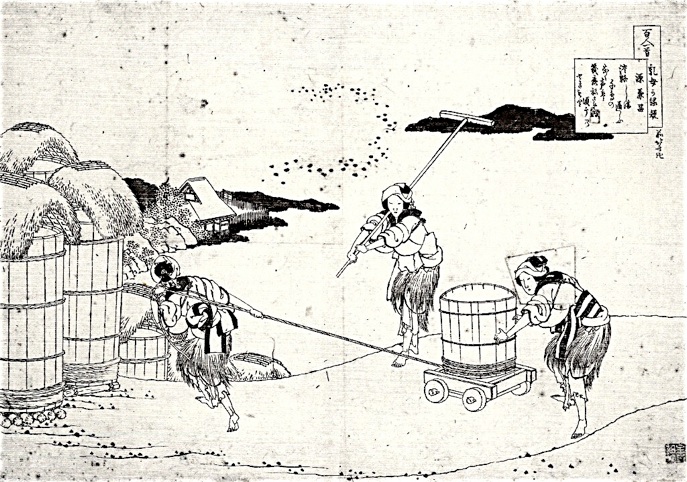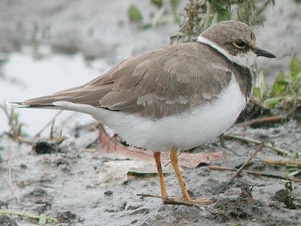源兼昌


淡路島
かよふ千鳥の
鳴く声に
幾夜ねざめぬ
須磨の関守
みなもとのかねまさ
あわじしま
かようちどりの
なくこえに
いくよねざめぬ
すまのせきもり
Minamoto no Kanemasa
Flying back and forth
From Awaji Isle
The plovers with their song
Have many nights kept awake
The guards at Suma Gate.
Hokusai
Minamoto no Kanemasa (? - 1112?). Not much is known about him; he was a contemporary of emperor Horikawa. Only seven poems of him are extant.
This poem is a bit cryptic. Does Kanemasa’s poem refer to the following poem in Murasaki Shikibu’s Genji Monogatari (Suma)?
Tomo chidori
morogoe ni naku
akatsuki wa
hitori nezame no
toko mo tanomoshi



Kochidori, little ringed plover in winter
Cries of plovers
in the dawn
bring comfort
to one who awakens
in a lonely bed.
In this chapter Genji, after his disgrace at court, decides to go on a self-imposed exile to Suma, where still sleepless at dawn he hears the plovers and recites the above poem. Suma was an almost deserted place then.
In the Heike Monogatari we read the words said by the Imperial Lady: “But I could not help feeling miserable early in the Juei autumn, when my clansmen ... journeyed along the coast from Suma to Akashi... In the daytime, my sleeves were drenched as we cleaved the boundless waves; at night, I cried until dawn with the plovers on the long sandpits.”
The plover in Japanese poetry is closely associated with winter, and it is a waterside bird. Awaji is a desolate place, a common destination for political exiles. So there would have been a guarded gate on the mainland north of the island to prevent exiles from crossing over and entering the civilised world at Kobe. The birds would be the only creatures having free movement in and out of the island.
Sekimori-cho and Suma Ward are part of Kobe now. There is also a ‘vociferous’ (charadrius vociferous) and a ‘piping’ plover (charadrius melodus). I wonder whether with kayou-chidori is not meant one of these species, kayou also means ‘song, ballad’.
Peter Morse in Hokusai - One Hundred Poets says that the drawing is showing the brewing of sake, making a pun of suma no sekimori (gatekeepers of Suma) and reading it as suma no sakemori (the keepers of sake of Suma), Suma and surroundings (east Kobe) being a place where fine sake is produced, certainly in Hokusai’s time. In the distance we see a flock of plovers. The Japanese expression chidori-ashi, 'plover's feet', signifies an inability to walk straight when drunk. So Hokusai was definitely having his fun with this drawing.
